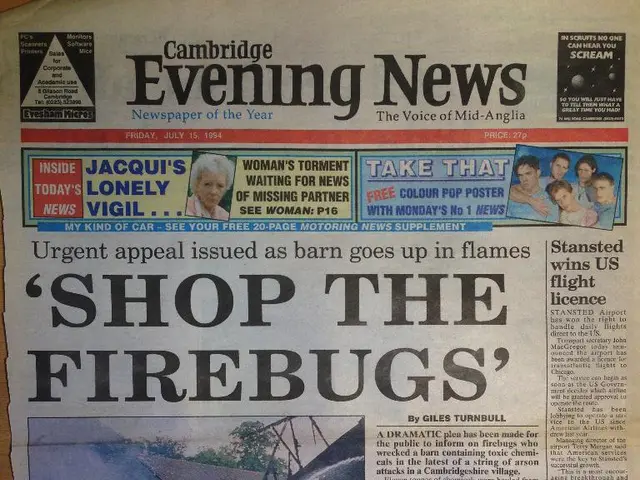Mastering Smoke and Fog Effects: Clueless? Not Longer!
Interview with Benjamin Stockloew from Fog, Smoke & Haze Factory GmbH: Unveiling the Magic Behind Fog Machines
In the world of luminous spectacles, fog machines have become an essential element, enriching the ambiance at concerts, theater shows, events, and nightclubs. Ever wondered about the diverse types of fog, what makes a good fog machine, and the challenges in operating these whiz-bang contraptions? Look no further as we Chat it up with Benjamin Stockloew from the Fog, Smoke & Haze Factory GmbH.
Tomi Diesel (TD): So, let's dive in. What kinds of fog are out there?
Benjamin Stockloew (BS): Well, first and foremost, you gotta separate smoke from fog. Smoke consists of particles suspended in the air, typically produced through the use of smoke powder or cartridges. Fog and haze are liquid droplets, created through vaporization. This vaporization method works wonders without posing any health risks when utilized correctly.
Broadly speaking, the primary distinction between haze and fog is the size of the droplets and consequently the density of the fog or haze you produce.
TD: Where does fog find its place?
BS: Any place where there's lighting allure is where you'll find fog and haze too. Light beams need something to strike, and nearly always, that's haze or fog. Haze is ubiquitous at concerts with a light show, while fog is more of a star in its own right as an effect.
TD: What are the hallmarks of a stellar fog machine?
BS: Exact and steady temperature regulation is the key. That's the only way to ensure clean vaporization of the fluid. A basic thermal cutoff isn't guaranteed for that. And don't forget energy efficiency. A heating element that's constantly radiating excessive heat, only to restart heating at the very instant the machine should generate fog, is essentially useless.
TD: What hurdles arise when we're talking about producing fog effects for the stage or events?
BS: Depending on the location, external factors can significantly impact the behavior of the fog. At open-air events, a simple gust of wind can disperse an entire cloud of haze from the stage, leaving you high and dry on the light show. Indoors, powerful air conditioning poses similar challenges for the lighting technician. Fog effects are much like light and sound – they must be tailored to each and every venue.
TD: Thanks a million, Benjamin!
Additional Insights:
- Fog Machine Types: Dry ice fog machines, laser light fog machines, DMX fog machines, and LED fog machines are some common types of fog machines.
- Key Characteristics: Key aspects include output and coverage, lighting options, control systems, and power and portability.
- Operational Challenges: Ventilation and safety, machine maintenance, environmental factors, and logistical challenges are common operational hurdles.
- Performance Challenges: Achieving consistent fog density, lighting compatibility, and maintaining audience comfort require careful consideration.
Choosing the right fog machine depends on factors such as specific event requirements, venue size, and logistical considerations. Keep these insights in mind when you're in the limelight, ready to dazzle audiences with your command over fog and haze effects!
In the realm of entertainment, technology plays a pivotal role in enhancing the effect of fog machines, creating an immersive experience at concerts, events, and nightclubs.
Embracing this technology, modern fog machines cater to diverse lifestyle preferences, offering a range of fog machine types such as dry ice fog machines, laser light fog machines, DMX fog machines, and LED fog machines to satisfy diverse event requirements.








